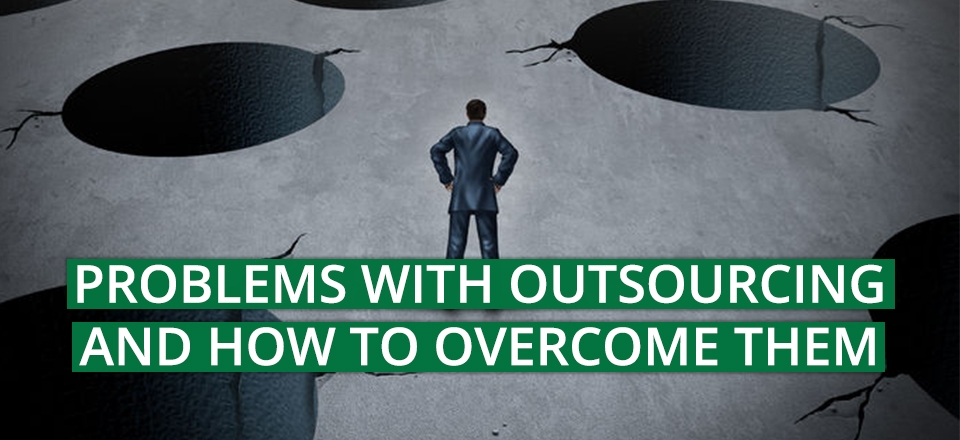Outsourcing to offshore virtual assistants can cut your operational costs by 60-70%, but only if you navigate the challenges properly. Most Australian businesses stumble on the same six issues.
After working with hundreds of companies transitioning to offshore VAs, we’ve documented exactly what goes wrong and how to fix it. These aren’t theoretical concerns—they’re the real problems that cost businesses money every day.
1. Change Management
Your team will resist outsourcing. Statistics show 25-50% of outsourced projects fail, with 30% ending in the first year. The reason is simple: companies underestimate internal resistance.
When you announce outsourcing plans, your employees immediately think they’re being replaced. Some will openly complain. Others will quietly undermine the process. Your best performers might start job hunting. This happens in nearly every company, yet leadership acts surprised each time.
The fix requires structured change management from day one. Start by explaining exactly which roles are affected and which aren’t. Be specific: “We’re outsourcing data entry and appointment scheduling. Your analysis and client relationship roles are expanding, not disappearing.”
Your Managers Need Different Skills
Managing offshore VAs requires different skills than managing local staff. Your managers can’t walk over to check on progress. They can’t read body language in meetings. They need to judge performance by output metrics rather than hours at a desk.
Most managers struggle with this transition. They’re used to management by presence—seeing people working means work is getting done. With VAs, they need to shift to management by results. Set a task, define the outcome, check the deliverable. The process in between becomes irrelevant.
Generation Z workers, now 19% of Australia’s workforce, actually prefer this style. They’re comfortable with remote collaboration and outcome-based performance. Your older managers need training to catch up.
Successful companies run manager training before VA onboarding. Cover these essentials:
- Writing clear task briefs with measurable outcomes
- Using project management software effectively
- Running productive video meetings across time zones
- Providing feedback to workers from different cultures
Budget 10-15% of your outsourcing spend on change management. A $100,000 VA program needs $10,000-15,000 for training, communication, and support. That investment prevents the 30% failure rate.
2. Cultural Differences
Cultural mismatches cause 70% of outsourcing failures, according to PwC’s 2024 research. The problem isn’t language—most Filipino VAs and Indian VAs speak excellent English. The problem is how they communicate and make decisions.
Filipino culture scores 94 on the power distance index compared to Australia’s 36. This means your Filipino VA expects clear hierarchy and won’t challenge your decisions, even when they spot problems. They value pakikisama (maintaining harmony) over directness.
Here’s what this looks like in practice:
When you ask “Can you finish this by Friday?” a Filipino VA says yes even if it’s impossible. They don’t want to disappoint you. When Friday arrives and the work isn’t done, you’re frustrated and they’re ashamed. Both parties lose.
Australian managers report these specific challenges with Filipino VAs:
- Providing excessive medical details when calling in sick (it’s how they prove legitimacy in their culture)
- Escalating minor decisions repeatedly (they don’t want to overstep boundaries)
- Missing deadlines without warning (they avoid delivering bad news)
- Saying “yes” when they mean “I don’t understand” (preserving face is crucial)
Working With Cultural Differences
Don’t try to change their culture. Work with it. Filipino VAs excel when you provide:
- Written procedures for every common task
- Clear KPIs with numerical targets
- Daily check-ins via Slack or Teams
- Explicit permission to ask questions and report problems
Change your communication style. Instead of “Handle this however you think best,” say “Here are three ways to approach this task. Which would you recommend and why?” This gives them structure while encouraging input.
Indian VAs present different challenges. They’re typically more comfortable challenging ideas and suggesting improvements, but might overcomplicate simple tasks. They often prefer detailed technical discussions over quick decisions. Adjust your management style accordingly.
3. Unrealistic Expectations
The global BPO market reached $302.62 billion in 2024 and will hit $525.23 billion by 2030. With 68% of US companies outsourcing something, executives think it’s a magic solution.
Reality: You’ll spend more money in the first three months than you save. VAs need training, systems need integration, and productivity starts at about 40% of target. Companies expecting immediate 70% cost savings get disappointed fast.
Actual Timeline for VA Success
Vendor selection takes 8-14 weeks minimum:
- Weeks 1-2: Define requirements, get internal buy-in
- Weeks 3-6: Evaluate providers, check references
- Weeks 7-10: Test candidates, negotiate contracts
- Weeks 11-14: Legal review, setup systems
Onboarding takes another 12 weeks:
- Weeks 1-2: Documentation transfer, system access setup
- Weeks 3-4: Role-specific training, cultural orientation
- Weeks 5-8: Supervised task completion with daily feedback
- Weeks 9-12: Gradual independence with weekly check-ins
After six months, you’ll see real ROI. Simple tasks like data entry show results in 4-6 weeks. Complex processes like customer service or bookkeeping need 3-4 months. Strategic roles like marketing or operations support take 6-12 months to optimize.
Set these expectations with stakeholders upfront. Show them the investment curve: negative ROI for three months, break-even at month four, positive returns from month seven. Companies that understand this timeline succeed. Those expecting instant results fail.
4. Contract Confusion
Fair Work Commission rulings now classify many Filipino contractors as employees under Australian law. This triggers Australian employment obligations:
- Minimum wage requirements ($23.23/hour minimum as of July 2024)
- Superannuation contributions (11.5% of wages)
- Leave entitlements (4 weeks annual, 10 days sick)
- Unfair dismissal protections
Companies are paying six-figure settlements for misclassification. One Sydney marketing agency paid $180,000 in backpay and penalties for three Filipino VAs they’d engaged as contractors for two years.
Getting Contracts Right
Your contract must clearly establish the independent contractor relationship. Include:
- VA provides own equipment and workspace
- VA sets their own hours within agreed parameters
- VA can work for other clients
- VA is responsible for their own taxes and benefits
- Payment is per project/outcome, not per hour
Specify exact deliverables and performance metrics:
- Response time requirements (e.g., emails within 2 hours during business hours)
- Quality standards with measurable criteria
- Output expectations (e.g., 50 customer tickets per day
- Escalation procedures for problems
Both parties need a single point of accountability for contract interpretation. When your VA asks about clause 7.3 six months from now, someone needs to provide the definitive answer. Document every clarification in writing.
5. Security and IP Risks
Data breaches averaged $4.88 million in 2024, up 10% from 2023. With 82% of breaches occurring in cloud environments, your VA setup is a prime target.
VAs typically work from home using:
- Personal laptops without enterprise security
- Home WiFi without proper encryption
- Gmail or Dropbox instead of secure platforms
- Passwords like “Password123!”
They’re not malicious—they just don’t understand security. One compromised VA account can expose your entire customer database.
Essential Security Measures
Implement these requirements immediately:
Access Control:
- Two-factor authentication mandatory on all systems
- Unique passwords minimum 12 characters
- Password manager subscription (provide and pay for it)
- Access logging on all critical systems
Network Security:
- VPN required for all work ($10-15/month per user)
- No public WiFi ever
- Dedicated work device if handling sensitive data
Data Protection:
- No local storage of customer data
- Encrypted file transfer only
- Regular security training (monthly 15-minute sessions)
- Immediate notification of any suspected breach
Australian Privacy Act changes in 2025 add stricter requirements:
- Mandatory breach notification within 72 hours
- Privacy impact assessments for high-risk processing
- Enhanced penalties up to $2.5 million
- Personal liability for directors in serious cases
Check if your VA provider has ISO 27001 certification. Ask for their latest security audit. If they can’t provide it, find another provider.
6. Hidden Costs
Hidden costs inflate budgets by 40-60% above quoted rates. That $10/hour Filipino VA can actually cost $16-18/hour all-in.
Here’s the real cost breakdown for a Filipino VA:
Base salary: $10/hour Mandatory additions:
- 13th month pay: +8.3% ($0.83/hour)
- Internet allowance: $75/month (~$0.47/hour)
- Equipment depreciation: ~$0.31/hour
Management overhead:
- Daily supervision: 30 minutes manager time
- Task preparation: 15 minutes per task
- Quality checking: 20% of task time
- Total management: +20% of base ($2/hour)
System costs:
- Project management tool: $15/month per user
- Communication platform: $12/month per user
- File storage: $10/month per user
- Time tracking: $8/month per user
- Total systems: ~$0.28/hour
Training investment:
- Initial training: 40 hours @ full pay
- Ongoing training: 2 hours/month
- Productivity ramp: 50% for first month, 75% for second
- Training cost spread over first year: ~$1.50/hour
Compliance and administration:
- Payroll processing: $50/month per VA
- Legal compliance: $100/month per VA
- HR administration: $30/month per VA
- Total admin: ~$1.13/hour
Real hourly cost: $16.44
Australian businesses report spending 2-5% of contract value just managing the vendor relationship. For a $100,000 annual VA spend, budget another $2,000-5,000 for relationship management.
Factor in Fair Work compliance costs if you’re in a regulated industry. Accounting firms need Tax Practitioners Board compliance. Healthcare needs privacy compliance. Financial services need additional security measures.
All of these additional costs can add up quickly, which is why working with a company like Virtual Done Well can help to make things easier for you.
Making Outsourcing Work
Australia’s BPO market hit $44.5 billion in 2024, with 36,000+ businesses using offshore VAs. The Philippines remains our preferred destination, with 44,000 Filipinos working for 300+ Australian companies.
These successful companies do six things consistently:
- Budget realistically – Add 50% to any quoted rate for true costs
- Invest in change management – Spend 10-15% of budget on internal preparation
- Respect cultural differences – Train both sides on communication styles
- Set proper timelines – Allow 6 months to see real ROI
- Get legal advice – Fair Work compliance is non-negotiable
- Prioritize security – One breach costs more than years of security investment
Start with one VA on non-critical tasks. Document everything—processes, costs, problems, solutions. Scale gradually as you learn what works for your business. Most companies that fail try to transform everything at once.
Virtual Done Well helps Australian businesses navigate these challenges daily. We’ve learned these lessons from hundreds of client experiences, not textbooks. The companies getting 3-5x ROI from VAs aren’t lucky—they’re prepared.



Many thanks for this, I am going to undoubtedly discuss it with my
favorite site visitors.
Good post. I learn something totally new and challenging on sites I stumbleupon every day.
It’s always helpful to read through articles from other writers and use something
from their web sites.
I am delighted with your careful strategy, why don’t we link up
some time.
We are happy to know this website.
Hi there! This post could not be written any better! Reading through this article reminds
me of my previous roommate! He continually kept talking about this.
I am going to send this post to him. Fairly
certain he will have a very good read. Thank you for
sharing!
Thank you Binary.
We will be posting more interesting stuffs here at Virtual Done Well web blog.
Hello, I am an avid reader of your website! I tend to agree with this as I am a virtual nurse for a full-service BPO company.
Happy to hear that you’re an avid reader!
Thank you for your support!
Glad to hear that! Thanks for your support!